SIGGRAPH 1986: A Retrospective
Chair(s):
- Patric D. Prince
-
- California State University
Art Show Administrator(s):
- Deborah Sokolove Colman
-
- West Coast University, Los Angeles
Location:
Dallas, Texas, United States of America
Dates:
August 18th-22nd, 1986
Art Show Overview:
Since the mid-Sixties, computer art has been seen in museums and galleries world-wide, with several recent major exhibitions. However, the pieces shown were usually the artists’ newer works.
It is appropriate and pertinent at this year’s exhibition to show computer-aided art in the context of that which went before. The 1986 art show traces the development of computer art over the past twenty-five years through the work of artists who have been involved with it from its inception.
The 1986 art show is the fifth exhibition of fine art that ACM SIGGRAPH has sponsored in conjunction with its annual SIGGRAPH conference.
Patric D. Prince
Committee(s):
- Maxine D. Brown
-
- Maxine Brown Associates
- Donna J. Cox
-
- Illinois Institute of Technology
- University of Illinois
- Paul Allen Newell
-
- Abel Image Research
- Sylvie Rueff
-
- Jet Propulsion Laboratory
- Gary Walker
-
- Jet Propulsion Laboratory
- Gayle Westrate
General Committee:
Visual Proceedings:
View PDF: [SIGGRAPH 1986: A Retrospective]
Acknowledgements:
I thank Louise Ledeen for her support and advice, the Art Show committee for their billions and billions of donated hours, and the nucleus of dedicated volunteers who have worked diligently to produce this art show.
Artworks and Animation Materials Have Been Loaned by the Artists and:
Dr. Prof. Herbert W. Franke, Puppling, West Germany
John Landsdown, Computer Arts Society, London, England
Greg Mcfarlane, Evans and Sutherland, Inc., Salt Lake City, Utah
Oliver Strimpel, Computer Museum, Boston, MassachusettsPost-Production Facilities Provided by
McDonnell-Douglas, Douglas Aircraft Company, Motion Picture/Video Production Division
Nathan SimmonsComputers and Support Provided by
Apollo Computers, Chelmsford, Massachusetts
AT&T, EPIC Center, Indianapolis, Indiana
Chuck Kozak, Aurora Systems, San Francisco, California
Commodore-Amiga, Los Gatos, California
Electronic Arts, San Mateo, California
Island Graphics, Sausalito, California
Kurta Corporation, Phoenix, Arizona
Lufthansa Airlines, West Germany
Newtek, Topeka, Kansas
Silicon Graphics, Mountain View, CaliforniaTechnical Assistance
Neal Handly
Robert E. Holzman
Exhibition Artworks:
-

SST vs Capitol
[Barry Wessler]
Categories: [Animation & Video] -

Star Trek ll: Genesis Sequence
[Lucasfilm]
Categories: [Animation & Video] -

Statue of Liberty
[Kenneth C. Knowlton]
Categories: [2D & Wall-Hung] -
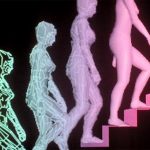
Steps
[Rebecca Allen]
Categories: [Animation & Video] -
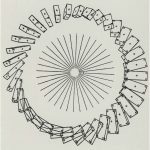
Still from Simulation of a Two-Gyro Grav...
[Edward E. Zajac]
Categories: [Animation & Video] -
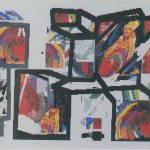
Stillife 8
[Josepha Haveman]
Categories: [2D & Wall-Hung] -
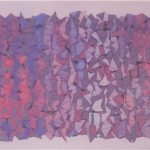
Stretch
[Susan Brown]
Categories: [2D & Wall-Hung] -

Structure Study II: Yellow, Red, Brown, ...
[Colette Bangert] [Charles Bangert]
Categories: [2D & Wall-Hung] -

Sudanese Mobius Band
[Dan Asimov] [Doug Lerner]
Categories: [Animation & Video] -

Sunrise
[David Em]
Categories: [2D & Wall-Hung] -

Sunstone
[Ed Emshwiller]
Categories: [Animation & Video] -

Superpaint
[Richard Shoup]
Categories: [Animation & Video] -

Surface Generation by Computer
[Ford Motor Company]
Categories: [Animation & Video] -
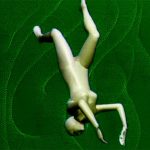
Swimmer
[Rebecca Allen]
Categories: [Animation & Video] -
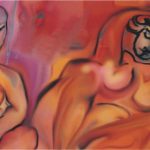
Symbolic Homage to Picasso
[Lillian F. Schwartz]
Categories: [2D & Wall-Hung] -

Symmetrische Durchdringung gerader und u...
[Klaus Basset]
Categories: [2D & Wall-Hung] -
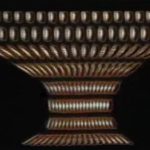
Temple
[Vibeke Sorensen]
Categories: [Animation & Video] -

Temple_2.land
[James Arvo] [Michael Sciulli]
Categories: [Installation] -

Tetrad
[Bruce Hamilton] [Susan Hamilton]
Categories: [3D & Sculpture] -

The Adventures of Andre and Wally B.
[Pixar Animation Studios]
Categories: [Animation & Video] -
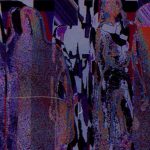
The CEO Apologizing to her CRT from a Mo...
[Gerald Hushlak] [Larry Sinkey]
Categories: [2D & Wall-Hung] -
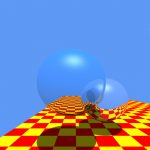
The Compleat Angler
[Turner Whitted]
Categories: [Animation & Video] -
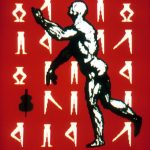
The Conversation #1
[Copper Frances Giloth]
Categories: [Installation] -

The Cube's Transformations
[Ron Resch]
Categories: [Animation & Video] -
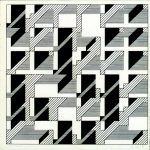
The Cube: Theme and Variation TVC 3
[Matjaz Hmeljak] [Edward Zajec]
Categories: [2D & Wall-Hung] -
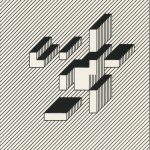
The Cube: Theme and Variations TVC 3271
[Matjaz Hmeljak] [Edward Zajec]
Categories: [2D & Wall-Hung] -
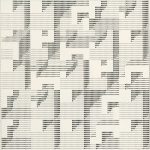
The Cube: Theme and Variations TVC 59888
[Matjaz Hmeljak] [Edward Zajec]
Categories: [2D & Wall-Hung] -
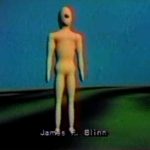
The Evolution of Blobby Man
[James F. Blinn]
Categories: [Animation & Video] -

The First Fractal Island
[Benoit B. Mandelbrot]
Categories: [Animation & Video] -
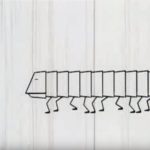
The Flexipede
[Tony Pritchett]
Categories: [Animation & Video] -
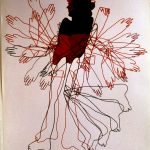
The Group Exercise
[Imrich Bertok] [Jozef Jankovič]
Categories: [2D & Wall-Hung] -

The Last Starfighter
[Digital Productions, Inc.]
Categories: [Animation & Video] -

The Place Above
[Imrich Bertok] [Jozef Jankovič]
Categories: [2D & Wall-Hung] -
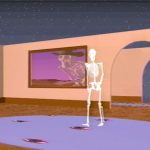
The Skeleton Animation System
[David Zeltzer]
Categories: [Animation & Video] -
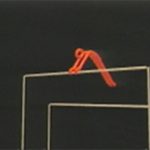
The Uneven Bars
[Susan Van Baerle]
Categories: [Animation & Video] -

Thermogenesis
[Ed Emshwiller]
Categories: [Animation & Video] -

Three Arrays
[Douglas Cox] [Robert Mallary]
Categories: [3D & Sculpture] -
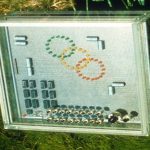
Three Ring Circuit
[Vibeke Sorensen]
Categories: [3D & Sculpture] -

Tomato Bushy Stunt Virus
[Arthur Olsen]
Categories: [Animation & Video] -
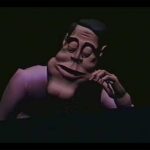
Tony de Peltrie
[Philippe Bergeron] [Pierre Lachapelle]
Categories: [Animation & Video] -

Tori in the Hypersphere
[Thomas Banchoff] [Hüseyin Koçak]
Categories: [Animation & Video] -
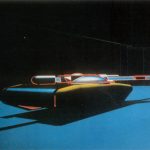
TRON: Light Cycles and Tanks
[MAGI] [Synthavision]
Categories: [Animation & Video] -

TRW series
[Cranston/Csuri Productions]
Categories: [Animation & Video] -

TRW Series
[Kenny Mirman] [Randy Roberts]
Categories: [Animation & Video] -

Tuber's Two Step
Categories: [Animation & Video] -
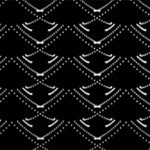
Two Space
[Larry Cuba]
Categories: [Animation & Video] -

Untangible
[Jacques Stroweis]
Categories: [Installation] -
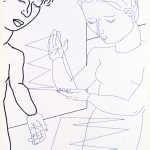
Untitled
[Barbara Nessim]
Categories: [Installation] -

Untitled
[Denis Bolohan]
Categories: [Installation] -
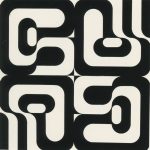
Untitled
[Manuel Barbadillo]
Categories: [2D & Wall-Hung] -
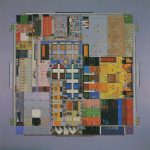
Untitled
[Mark Wilson]
Categories: [2D & Wall-Hung] -

Untitled
[Vibeke Sorensen]
Categories: [Installation] -
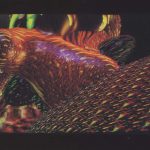
Untitled
[Yoichiro Kawaguchi]
Categories: [2D & Wall-Hung] -

Victims
[Thomas Porett]
Categories: [Installation] -

Violin 6
[Susan Brown]
Categories: [2D & Wall-Hung] -
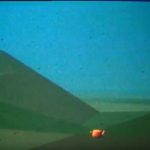
Vol Libre
Categories: [Animation & Video] -

Voodoo Mojo
[Jim Gibson]
Categories: [Installation] -
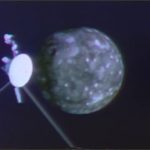
Voyager 2 Encounters Jupiter
[James F. Blinn]
Categories: [Animation & Video] -

Wave Lattice
[Joan Truckenbrod]
Categories: [Installation] -

Wild Thing
[MAGI]
Categories: [Animation & Video] -

Work # 10
[Chihaya Shimomura]
Categories: [2D & Wall-Hung] -
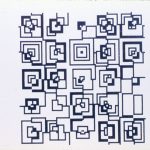
Work # 16
[Chihaya Shimomura]
Categories: [2D & Wall-Hung] -

Work #4
[Chihaya Shimomura]
Categories: [2D & Wall-Hung] -

X-Ray
[Jeremy Gardiner]
Categories: [2D & Wall-Hung] -
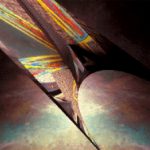
Zotz
[David Em]
Categories: [2D & Wall-Hung]
« First
‹ Previous
1
2
3
Exhibition Writings and Presentations:
-
Title:
Computer Aesthetics: New Art Experience, or The Seduction of the Masses
Author(s):
Category: Essay
Abstract Summary:
In the early twentieth century, Modern artists, notably Suprematists, Cuba-Futurists and Constructivists, rejected scientific perspective and descriptive art [1]. Although this dismissal of the world of appearances in art was never accepted by the general public, Modernism evolved from that rejection.
[View PDF]Title: Computer Graphics as Artistic Expression
Author(s):
Category: Essay
Abstract Summary:
Computer graphics has been in existence for more than twenty years. From the beginning, people experimented on ways to use the new medium – in addition to scientific, technical and commercial application – for artistic goals. Around 1965, Germans Frieder Nake and Georg Nees and the American, A. Michael Noll, strove for that goal; they were followed by individuals such as Kenneth Knowlton, the team of Charles Csuri and James Shaffer in America, and the Japanese Computer-Technique Group. All of them were represented in the large exhibition “Cybernetic Serendipity” in 1968 in London.
[View PDF]Title: TV NEEDS MTV LIKE MTV NEEDS COMPUTERS
Author(s):
Category: Essay
Abstract Summary:
J. S. Bach’s last unfinished work, THE ART OF THE FUGUE, is a magnificent network of simple theme and variations that are interwoven, transposed, inverted, and retrogressed. Some believe that Bach’s counterpoint, which consists of a complementarity of voice-parts, exhibits an affinity with algorithmic computer-program instructions and procedures. I agree, and I believe that a video counterpoint offers a special complementarity between its own musical and its visual voice-parts.
[View PDF]Title: Visions of Mind
Author(s):
Category: Essay
Abstract Summary:
Computer art is unfolding on the basis of scientific and engineering achievements of pioneering personalities, whose vision suggested that it should be possible to wrest something other than calculation speed and numeric precision from those crude and clumsy computers; something that could be turned into meaningful images. They set out to build dedicated machines to interpret an intuitive stroke with a pen or a snapshot taken through the lens of a camera. They designed displays that show more colors and change images faster than the human eye can distinguish. They devised software to generate pictures that appear just like photographs of reality. All of this has been accomplished within the short timespan of two or three decades. The history of computer graphics reads like a tremendous technical success story.
[View PDF]Title: Why it Isn't Art Yet
Author(s):
Category: Essay
Abstract Summary:
For twenty plus years, I have participated in “computer art” as a developer/ experimenter /inventor of languages/interfaces/techniques, as a collaborator/teacher/writer, and as a “computer artist.” As a result of all this, I finally feel like an established practitioner in an enterprise that doesn’t (at least not yet) exist.
[View PDF]



